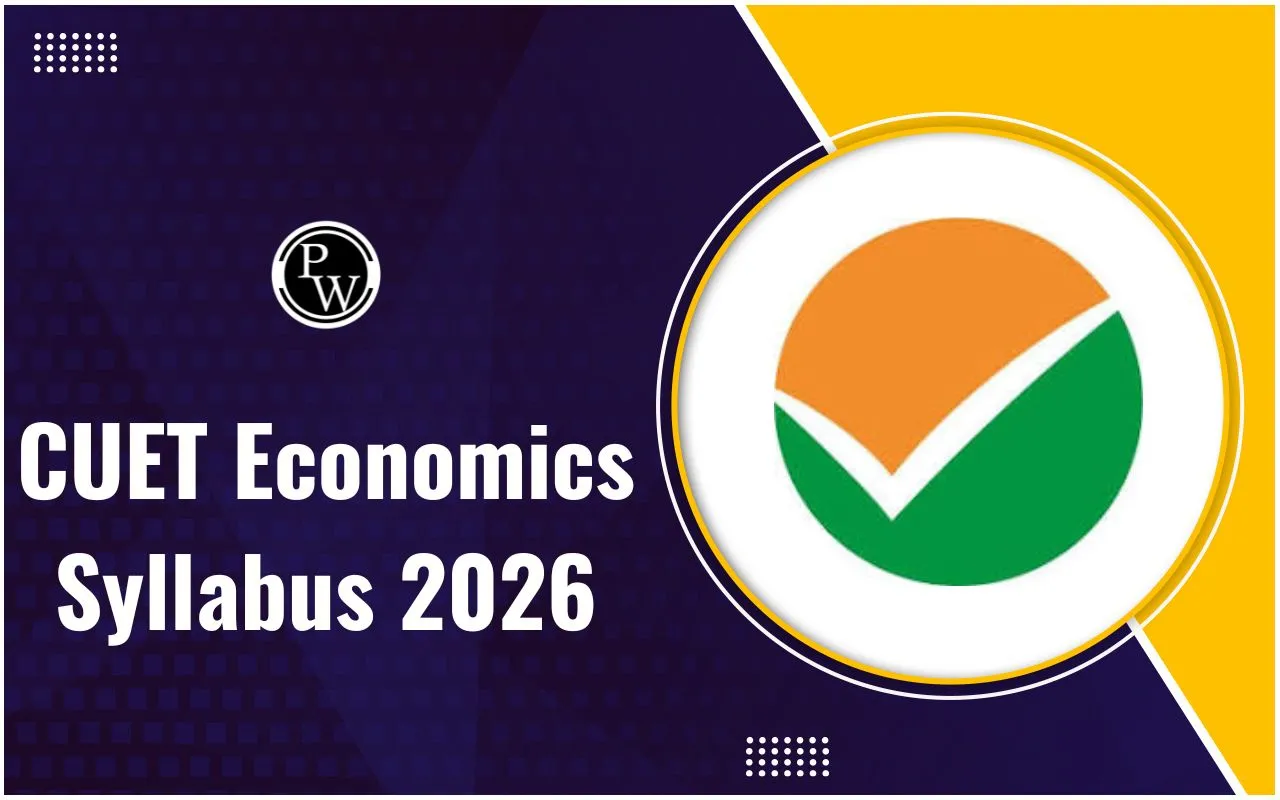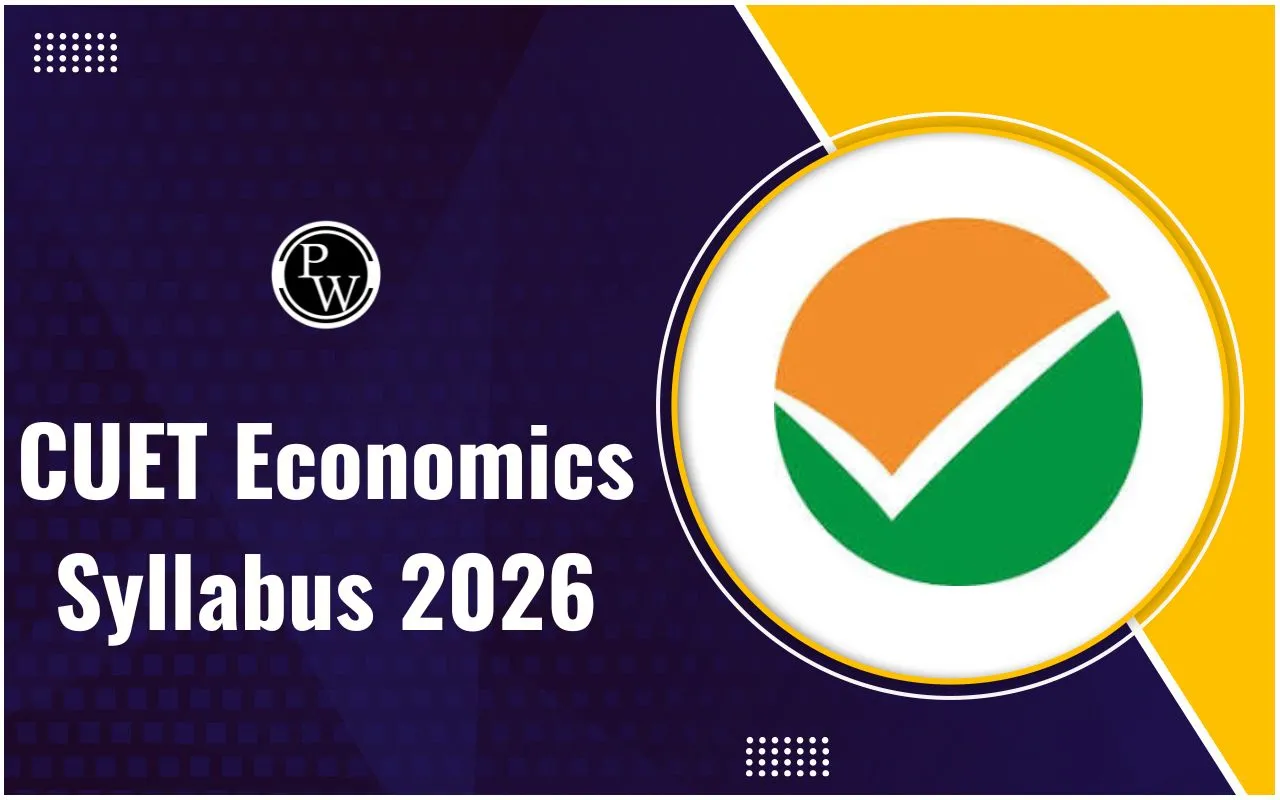

CUET Economics Syllabus 2026 is yet to be updated by the National Testing Agency. The syllabus is expected to remain the same as per the 2025 exam cycle. Consumer Behavior and Demand, Determination of Income and Employment, National Income, and Money and Banking are important topics that will be covered in the CUET Economics Syllabus 2026. CUET Economics Syllabus 2026 is categorized into 10 units covering essential topics from both Microeconomics and Macroeconomics.
Preparing for the CUET UG 2026, expected to be held in May 2026, candidates must have a comprehensive understanding of the syllabus. Focus on high-weightage topics, and manage time effectively during CUET 2026 preparation. Candidates must visit the official website of NAT to get the latest updates regarding the CUET Economics Syllabus 2026.
CUET Economics Syllabus 2026 Overview
CUET Economics syllabus PDF helps students understand the structure of the exam. The CUET Economics paper is conducted in online mode and includes MCQs from both units. Students should follow the NCERT book closely because NTA prepares questions from it.
Here are the details of the CUET Economics Syllabus 2026:
| CUET Economics Syllabus 2026 Overview | |
| Particulars | Details |
| Status of CUET Economics Syllabus | Available |
| CUET Exam Conducting Body | National Testing Agency (NTA) |
| Mode of Examination | Computer-Based Test |
| Medium of Exam | 13 languages - English, Hindi, Urdu, Assamese, Bengali, Odia, Punjabi, Gujarati, Marathi, Tamil, Telugu, Kannada, Malayalam |
| Number of questions | 50 questions (all compulsory) |
| Exam duration | 60 minutes |
| Type of questions | Multiple Choice Questions |
| Maximum Marks | 250 per subject |
| Marking Scheme | +5 for each correct answer-1 for each incorrect answer |
| CUET Economics Mapping for Courses | B.A. Hons. In EconomicsB.Sc. in EconomicsB.Com (Hons.) |
CUET Economics Chapter Wise Weightage 2026
Unit Wise CUET Economics Syllabus 2026
CUET Economics syllabus for 2026 is divided into ten units, covering both microeconomics and macroeconomics concepts. This unit-wise division helps students systematically prepare for the exam by understanding the key areas of economics in a structured manner. Here is the CUET Economics Syllabus 2026 Unit Wise, aligned with the previous year’s syllabus:
| CUET Economics Syllabus 2026 Unit Wise | |
| Units | Topics |
| Course I: Microeconomics | |
| Unit 1: Introduction |
|
| Unit 2: Consumer Behaviour and Demand |
|
| Unit 3: Producer Behaviour and Supply |
|
| Unit 4: Forms of Market and Price Determination |
|
| Unit 5: Simple Applications of Tools of Demand and Supply Curves | The teachers can be given the flexibility to choose the issues: rationing, floors and ceiling, and Food Availability Decline (FAD) Theory (the teachers may also choose alternative examples thatare simple and easy to understand) |
| Course II: Macroeconomics | |
| Unit 1: National Income and Related Aggregates — Basic Concepts and Measurement |
|
| Unit 2: Determination of Income and Employment |
|
| Unit 3: Money and Banking |
|
| Unit 4: Government Budget and the Economy |
|
| Unit 5: Balance of Payments |
|
CUET Economics Exam Pattern 2026
CUET Economics Exam Pattern 2026 is designed as a computer-based test conducted by the National Testing Agency (NTA). It features 50 multiple-choice questions that must be answered within 60 minutes. The details of the CUET Economics Exam Pattern 2026 are as follows:
| CUET Economics Exam Pattern 2026 | |
| Particulars | Details |
| Mode of the examination | Computer-Based Test |
| Number of Slots | Three to four |
| Type of questions | Multiple Choice Questions (MCQs) |
| CUET UG sections | Section 1 - LanguageSection 2 - Domain SubjectSection 3 - General Aptitude Test |
| CUET Total number of Questions | 50 across all subjects |
| Negative marking | Yes |
| Marking Scheme | +5 for each correct answer |
| Negative Marking | -1 for each incorrect answer |
| Medium of CUET exam | 13 languages - English, Hindi, Assamese, Bengali, Gujarati, Kannada, Malayalam, Marathi, Odia, Punjabi, Tamil, Telugu, and Urdu |
| Number of domain subjects | 23 |
CUET 2026 Economics Syllabus Preparation Tips
Effective preparation for CUET 2026 Economics requires a strategic approach focusing on understanding key concepts, regular practice, and time management.
Some preparation tips are as follows:
- Start by thoroughly studying the NCERT Class 11 and 12 Economics textbooks, as most questions are based on these.
- Focus on understanding key economic concepts like demand and supply, elasticity, market structures, national income, and government budget.
- Practice solving previous years’ CUET Economics papers and sample questions to get familiar with exam patterns and question types.
- Make concise notes of important formulas, definitions, and graphs for quick revision.
- Stay updated on current economic events and policies like RBI announcements and the national budget.
CUET Economics Syllabus 2026 Preparation Books
For preparing the CUET Economics syllabus 2026, selecting the right books is crucial. Candidates should focus on the NCERT Class 11 and 12 Economics textbooks for foundational concepts. These books provide comprehensive coverage of the syllabus, practice questions, and detailed explanations to aid effective preparation.
Physics Wallah provides CUET UG Online Coaching with live classes, study materials, and practice tests. The courses are designed to make learning simple and effective, helping you prepare for your CUET UG exams with ease.
